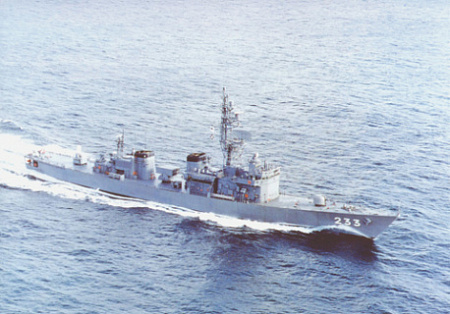
In a significant strategic move aimed at countering Beijing’s growing assertiveness, Japan has agreed to transfer six destroyers to the Philippines. The deal, first reported by Japan’s Yomiuri newspaper, will provide the Philippine Navy with its largest and most powerful vessels to date, marking a substantial upgrade to its maritime capabilities and deepening the security alliance between Tokyo and Manila in a direct challenge to China’s dominance in the region.
The transfer comes amid escalating tensions in the South China Sea, a critical waterway where competing territorial claims from China, the Philippines, Vietnam, Malaysia, Brunei, and Taiwan have created a persistent flashpoint. Beijing’s sweeping claims over nearly the entire sea and its increasing military presence have alarmed its neighbors and the international community. This naval deal is a clear signal of a coordinated effort by regional powers to create a counterbalance to China’s military expansion.
According to reports, the agreement was solidified in June during a meeting in Singapore between Japan’s Defense Minister Gen Nakatani and his Philippine counterpart, Gilberto Teodoro. The transfer is part of a broader push to strengthen defense cooperation, which includes joint military exercises and a Reciprocal Access Agreement. This crucial pact effectively allows Japanese forces to operate on Philippine territory, giving Japan a strategic foothold in the contentious South China Sea, far from its own borders.
To execute the deal, Tokyo is navigating a clever legal workaround to bypass the constraints of its pacifist constitution. Article 9 of Japan’s constitution traditionally restricts the export of military armaments. Destroyers do not fall into any of the five categories of defense equipment permitted for export. However, the plan is to reclassify the transfer as a “joint development project.” By accommodating a request from Manila to install specific Philippine communication systems and equipment on the vessels, Tokyo can legally proceed with the transfer under the premise of joint production, which is not subject to the same export bans.
While the deal represents a major boost for the Philippine fleet, the hardware in question consists of aging Abukuma-class destroyers, which first entered service over 30 years ago. Japan is currently phasing out these vessels and replacing them with modern Mogami-class frigates. Therefore, while the transfer will significantly enhance the Philippines’ defensive posture, it is viewed as a foundational step rather than a move that establishes military parity with China’s rapidly modernizing naval forces.
This military cooperation is unfolding against the backdrop of a dramatic foreign policy shift in the Philippines under President Ferdinand Marcos Jr. Since taking office in 2022, Marcos Jr. has steered his country away from his predecessor’s pro-China stance and firmly toward the United States, positioning the Philippines as a key American ally and a strategic bulwark against Chinese ambitions in the Indo-Pacific.
Analysts note that while many Southeast Asian nations have historically sought to balance their relationships between the U.S. and China, Japan’s own military resurgence is viewed with apprehension by some in the region. Dmitry Mosyakov, an expert at the Russian Academy of Sciences’ Institute of Oriental Studies, observed that Japan is increasingly seen as a potential threat rather than a neutral third party. The government in Manila, however, clearly sees Japan’s rearmament not as a threat, but as a strategic opportunity to acquire much-needed military hardware and fortify its position in an increasingly volatile region.
